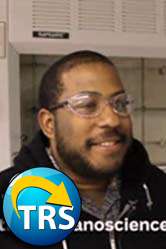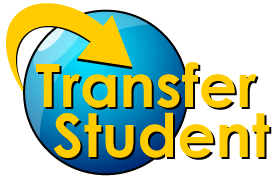Major: Biochemical Engineering
“Mid-Atlantic Nanoscience Education Hub program”

What research have you been doing this summer?
This summer I was a part of the first annual Mid-Atlantic Nanoscience Education Hub program which selects students from community colleges, in this case the Community College of Baltimore County (CCBC), who are interested in exploring the techniques and research related to nanotechnology. In addition to classes and being able to tour a host of labs in the area, I rotated through three different labs for two weeks each while learning about and assisting in ongoing research.
The first rotation was in the lab of the Daniel Group in the chemistry department of UMBC. The group specializes in the characterization and optimization of nanovectors for drug delivery and imaging, especially in cases of cancer. In addition to delivery to cancer cells on the whole, the prospect of targeting and monitoring the protein-protein interactions that promote tumorigenesis is an exciting new path to understanding and treating cancers. The use of gold nanoparticles in dimer form has been proposed as a way to attach and monitor individual proteins in protein-protein interactions. During the two weeks, several solutions of gold nanoparticles were synthesized and characterized using dynamic light scattering, ultraviolet-visible spectroscopy (UV-Vis) and transmission electron spectroscopy. Sample solutions were also dimerized and methods of measuring dimerization were explored.
The second rotation was in the U.S. Army Research Laboratory (ARL) in Aberdeen, Maryland in the Composite and Hybrid Materials Branch under the supervision of Dr. Mark Griep. In the lab, hybrid nanomaterials (i.e., biological molecules and nanomaterials such as quantum dots) were constructed and characterized. These are all potentially useful in developing materials with unique properties such as real-time target sensing. Ionic-Self Assembled Monolayer film techniques were explored and analyzed through fluorospectroscopy. Several quantum dot samples produced in a novel manner through sputtering (bombardment by energetic particles) were characterized using UV-Vis and found possibly to be useful in the case of the silver clusters produced.
The final rotation was again in the chemistry department of UMBC, but with the White Group. The abundance or lack of certain biomolecules in specific places, such as ATP, can be indicators of disease. One of the goals of the White Group has been to achieve high resolution bio-analysis through nanoscale electrochemistry. The fabrication and characterization of nanoelectrodes was done and compared to macroelectrodes specifically to test the efficacy of using gold nanoelectrodes to measure the amount of ATP in solution. Signal changes were measured in both cases using square wave voltammetry. In both cases, aptamers that bind to ATP were attached to the electrodes. In the case of the nanoelectrode, gold nanoparticles were deposited on the surface of the electrode to increase surface area for aptamer attachment.
I’m actually trying to be brief, but still communicate the vastness of the ideas we explored during the entire internship.
How did you find out about this opportunity? Was there a formal application process?
The opportunity was posted by Professor Laura LeMire at CCBC. There was a formal application including a reference and transcript along with an interview with UMBC professors.
Who did you work with on this project?
There were three principal investigators to whom I addressed questions and from whom I got initial direction: Dr. Marie-Christine Daniel-Onuta and Dr. Ryan White at UMBC and Dr Mark Griep at ARL. I worked most closely with UMBC chemistry graduate students Brian Szychowski, Lauren Schoukroun Barnes, and Florika Macazo; UMBC postgrad Dr. Juan Liu and ARL engineer Travis Tumlin. I also had partners from CCBC in each rotation: Shane Folk, Jennifer Betley and Hinesh Padhiar. Dr. Paul Smith and Dr. Stephen Mang also taught several classes and discussions about nanoscience and science in general. I am incredibly grateful for the time and knowledge given to me by all these great minds.
Was this your first research experience?
I had been participating in the Baltimore Underground Science Space, a community lab, for several months before this, working under the guidance of Dr. Thomas Burkett.
Do you get course credit for this work or get paid? How much time do you put into it?
This internship was fantastically funded by the NSF, so we were paid. I averaged 35-40 hours a week.
What academic background did you have before you started?
I had completed one year at CCBC which included classes in biology, engineering, math and chemistry.
How did you learn what you needed to know to be successful in this summer project?
I did a lot of reading. I read papers from the labs I worked in, as well as papers that may have informed the current work of the lab. I also did a fair amount of reading online and in hardcopy textbooks to get up to speed on subjects like organic chemistry, electrochemistry and nanotechnology.
What has been the hardest part about your work this summer?
The hardest part was keeping my head above water when integrating so many different subjects: biology, physics, engineering, and chemistry. For me, once the fields being dealt with are complex enough to touch on quantum mechanics (as is the case with nanotechnology) it’s easy for me to misunderstand. Figuring out what is useful when applied to different subjects is relatively challenging.
What was the most unexpected thing?
The most unexpected thing was the slow pace. To do cutting edge science correctly takes a lot of patience.
How does this research experience relate to your course work?
In one sense I used concepts learned in my course work every day, so applying course work was integral to an understanding of regular procedures and directions. However, there is a level of deep inquiry that just can’t be addressed by lower level course work. In that sense it’s not related to coursework at all because all research has an unknown ending.
What is your advice to other students about getting involved in research?
Research facilities and projects are a great way to break out of the lecture-exam (lecture-exam, lecture-exam…) cycle and feel like you’re contributing something. It can take some real patience and persistence to delve deeply, but that can be said of anything that is worthwhile. And maybe research or laboratories are not for you, but it’s pretty hard to know that unless you try it out.
What are your career goals?
I am interested in working in the intersection of human biology and technology, especially in relation neurology, but I am excited about all fields of biomedical engineering.
What else are you involved in on campus?
I will be attending UMBC for the first time in the fall as a transfer student. I am not sure what I will be involved in yet, but I plan to be tutoring in some capacity.
9/26/2018